- Home
- Daniel Defoe
Roxana Page 2
Roxana Read online
Page 2
Defoe was sensitive to the disadvantages women suffered in a society that denied them sexual, moral, educational, and legal equality with men, and in a number of works on marriage and the family6 he took an active part in a contemporary public argument about marriage and the role of marriage partners, reserving his greatest sympathy for daughters forced into distasteful alliances and for wronged wives. Defoe was in the forefront of those who argued for greater autonomy, particularly for women, and for a more equal relationship between marriage partners. Nonetheless, for all his sympathy with the position of women, Defoe makes it clear that there is no question but that Roxana, in arguing against marriage, is deeply and disturbingly wrong. The case against her is made by the Dutch merchant, whose views on marriage are Defoe’s own. He points out that while it is true that a married woman is subject to her husband, on the other hand, he has all the care and responsibility of earning a living, while she enjoys the benefits of his labour. But such a quid pro quo does not satisfy Roxana, who claims an absolute equality with men. This assertion, undoubtedly shocking to many of Defoe’s contemporaries, was ahead of its time, but when Roxana goes further, even to claiming the liberty of entertaining ‘a Man, as a Man does a Mistress’ (p. 188), contemporary readers would have had no doubt that her claim to an equality of sexual immorality with men was indefensible. Defoe intends us to see the unconventionality of Roxana’s stand.
The legal inequality of men and women in marriage was harder on the woman than the man, as Defoe and the Dutch merchant both know, but marriage remains a necessary institution, ‘decreed by Heaven’ (p. 191) for human happiness and social order. Defoe’s solution to the marriage problem is to be found most clearly outlined in his Conjugal Lewdness (1727). A genuine and well-founded love between the marriage partners dissolves the inequality, or, as the Dutch merchant puts it, ‘a sincere Affection between a Man and his Wife, answer’d all the Objections… and where there was a mutual Love, there cou’d be no Bondage; but that there was but one Interest; one Aim; one Design; and all conspir’d to make both very happy’ (p. 189). Here is the only true answer to all Roxana’s ‘wicked Arguments for Whoring’, but at this point in the novel she is so blinded by her own vanity and ambition that despite her affection for him she will not listen to the Dutch merchant’s pleas. As he remarks, wistfully but tellingly, ‘It is a pity so much Love… on both Sides, shou’d ever separate’ (p. 194). Her perversity in rejecting the Dutch merchant and his reasons for marriage are what will make Roxana’s fall inevitable.
3
Roxana is the most complex character Defoe ever created. Her story is the autobiography of a woman in the throes of a psychological disturbance so severe that eventually she becomes temporarily insane. Alone among his protagonists, she is passive and fearful in the face of difficulties and unusually dependent upon others, particularly her servant, Amy. Typically, Defoe’s heroes and heroines act alone, avoiding emotional and other entanglements as much as possible, and looking out for themselves with a sharp eye for the main chance. In his final novel, however, Defoe for the first time introduces a secondary character who throughout the story shares the action with the heroine. Frequently it is Amy who takes decisions and acts upon them when Roxana is immobilized by anxiety and indecision. Yet for all her decisiveness and capacity for independent judgement, Amy in some ways is less a character in her own right than an aspect of Roxana’s own personality. Amy does in deed what Roxana merely desires in her thoughts. But by doing so, she dramatizes Roxana’s moral quandaries. Amy shows the simple, practical solution; Roxana in her hesitation and reluctance reveals the moral complexity. And because Amy is willing to cut the Gordian knot of moral entanglements, she makes it possible for Roxana to do whatever she wishes, knowing all the while that what she wants is wrong. Since Amy acts out Roxana’s unspoken, and often unresolved, desires, she cannot also serve as the greatly needed outlet (‘Vent’ is Roxana’s word) for Roxana’s anguished emotions. Roxana, knowing that Amy’s solutions to her problems, however welcome, are really too simple, suppresses her deepest worries and her conscience, with the terrible result that the story records.
As the novel advances Roxana becomes more and more mentally ill. Although she carefully relates the symptoms of the successive stages of her mental and emotional deterioration, it is not easy for the modern reader to chart the course of her disease. This is because the vocabulary of late-seventeenth-century physiology used to describe such conditions – based on now discarded theories and in any case often maddeningly imprecise – has been replaced by the extensive terminology of modern abnormal psychology. When Roxana says that she suffered from ‘the Vapours’, or that her ‘Spirits’ were in violent motion, she is employing the terms of the old humoral medicine laid down by Galen in the second century. The notion which descended from antiquity that both physical and mental disorders were caused by an imbalance or corruption of one of the body’s four fluids, or ‘humours’ (blood, phlegm, choler, and black bile), was dying out in medical circles but the terms and many of the theories of humoral medicine retained a hold in popular conceptions of mental disease and even in the vocabulary employed by leading scientists. For example, corruption of the black bile was thought to produce ‘vapours’ which rose from the lower organs (specifically, the spleen) to the head, causing depression, headaches, bad temper, and in some cases insomnia. The term ‘vapours’ is synonymous with ‘the spleen’ and often with ‘melancholy’ (i.e., depression) – though melancholy is a very general name used of anything from low spirits to psychotic depression.
In order to explain how physical disorders affected the mind and caused mental illness the ancient medical authorities had postulated the existence of the so-called ‘animal spirits’, often thought of as subtle, highly refined particles distilled from the blood in the rational faculty of the brain, from whence they circulated throughout the body. The word ‘animal’ comes from the Latin anima, breath or soul, and hence the regular flow of the animal spirits was considered essential for human life. If disrupted or agitated the animal spirits would cause severe nervous disorders, or even death. When Roxana makes a gift of £40 a year (enough to live on) to her friend, the poor QUAKER woman, ‘sudden Joy was too much for her’. Roxana, seeing ‘the Disorder of her Mind’, explains that the surprise ‘had put her Spirits into such a violent Motion… it was ten to one odds, but that it had killed her’ (pp. 298–9).
In the late seventeenth century the theory of the animal spirits acquired a new importance for physiologists who, in the belief that man was explicable in mechanistic terms, sought physiological explanations for complex psychological conditions. The eminent physiologist Thomas Willis (1621–75), observing the destructive effect of strong passions on the health of the mind, invented an ingenious explanation.7 What happens, according to Willis, when someone goes mad from a powerful emotion such as pride or ambition is that his imagination swells up from contemplating his present or future greatness. The expansion of the imagination causes the animal spirits to rush to the head where, overly agitated, they burst out of their normal channels and cut new paths across the brain and the nerves, with the result that the intellect is tormented and the individual goes mad. Willis, in laying stress upon the role of the animal spirits in causing virtually all psychological disturbances, saw that various mental conditions were connected, and that apparently dissimilar conditions, such as depression and mania, might well be different manifestations of the same mental disease. Given Willis’s pre-eminence, important new ideas of this sort would gradually have become disseminated in much the same way that the ideas and terms of Freud have become widely known in our own day, even to people who have never read him.
The course of Roxana’s psychological deterioration is gradual. The first sign of her disturbed state of mind is the admission that she suffers from ‘dark Intervals’ produced by her guilty conscience in living with her landlord as his wife, while knowing that to do so ‘was horribly unlawful, scandalous, and abominable
’. The repression both of her dark thoughts and her conscience drives her into a ‘Stupidity’ (or lethargy, as it was sometimes called), that is, into a temporarily calm state of mind, of the sort often today induced by tranquillizers. Her tranquillity is interrupted by her terror during a stormy channel crossing and her ‘Stupidity’ now takes the form of ‘a silent, sullen kind of Grief’, one of the indications of the depression from which she is later to suffer severely. Bouts of remorse, however, alternate with periods of elation brought on by the contemplation of her own beauty and success. Like her contemporaries, Roxana believes that the ‘Madness and Distraction’ of mind that so often marks her behaviour during the height of her success are brought on by strong emotions (she mentions ‘Vanity’, ‘Pride’, and ‘an ambitious Mind’). During much of this time Roxana suffers from what physicians would then have called melancholy, a mental disorder characterized in her case by obsession and often accompanied by anxiety, guilt, delusions of grandeur, and insomnia – all of which Roxana suffers from.
After several years during which her behaviour grows more seriously obsessive and paranoid, to the degree that she becomes incapable of making moral decisions, Roxana’s mental health finally gives way entirely. The thought of becoming a princess, she tells us, ‘turn’d my Head; and I was as truly craz’d and distracted for about a Fortnight, as most of the People in Bedlam, tho’ perhaps, not quite so far gone’ (p. 278). What has happened is that the continued melancholy has now turned into a ‘frenzy’ (more or less what we would call mania), a more serious form of delirium marked by a fever (melancholy was sometimes defined as a delirium without fever) and a raging of the blood which in turn has inflamed the animal spirits, producing acute mental distraction. This is precisely the condition Roxana describes when she speaks of the ‘violent Fermentation in my Blood’ and explains that ‘the very Motion which the steddy Contemplation of my fancy’d Greatness had put my Spirits into, had thrown me into a kind of Fever, and I scarce knew what I did’ (p. 279).
The final stage of her psychological breakdown occurs when Roxana realizes that her daughter, Susan, has been murdered by Amy. Having been abandoned years before by Roxana, and now desperately trying to re-establish contact with her mother, Susan is the incarnation of all Roxana’s years of guilt and fear. The superstructure of Roxana’s criminal prosperity has been raised on the foundation of the desertion, and later the denial, of her children. With the death of Susan, Roxana is released from the fear of exposure but the knowledge of her crime and her responsibility at the same time drives her mad, and her imagination is haunted by hallucinations of her dead daughter, with her throat slit, her brains dashed out, hanged, or drowned.
Of course Defoe employs the vocabulary of his own age to describe the symptoms of Roxana’s mental disease. In modern terms Roxana’s bouts of melancholy and of frenzy would probably be diagnosed as depression and mania, the alternating disturbed states of mind of the manic-depressive psychosis from which she suffers. Her condition is prolonged and made worse by the absence of a genuine friend and confidant, which modern psychiatry recognizes as a primary therapeutic factor, to whom she could turn for advice, and through whom she could regain contact with the real world outside herself. As a result she suffers increasingly and intensely from ‘a secret Hell within’, the slow-growing but relentless spiritual cancer which eats away at her emotional and mental health. Defoe understood the way in which repressed emotions bury themselves deep within the human personality until they grow claws and begin to dig their way out, and he knew, too, of the way in which ambition and pride corrupt and destroy the soul. His depiction of these terrible processes at work in Roxana is among the finest things he ever wrote.
4
The dark ending of the novel, the story of her daughter Susan’s desperate attempt to force Roxana to acknowledge her and the fatal outcome of the girl’s pursuit of her mother, draws together the diverse strands of the book. Roxana’s exotic life – her wealth, foreign travel, splendid clothes and houses, lavish parties, and place at court – all rest upon the desertion of her five children and her willingness to become a whore. Moreover, she is from the beginning fully aware of her wickedness: ‘I was resolv’d to commit the Crime,’ she confesses, ‘knowing and owning it to be a Crime’ (p. 75). And at the height of her prosperity, while resolving to continue in her immoral way of living, she is forced to wonder, ‘Why am I a Whore now?’ (p. 244). The ending of the story draws the moral, and shows the link between Roxana’s crimes and the punishment which follows.
The symbol of Roxana’s immorality, and the link between her two lives, is the Turkish dress. Associated with the glamorous, dissolute, and aristocratic side of Roxana’s existence, the dress, which ‘wou’d not look modest’ in England (p. 291), and the ‘Turkish’ dance she performs while wearing it, cause her to be called ‘Roxana’, a name that suggests the courtesan, as Roxana knows when she refers to herself as ‘a meer Roxana’ (p. 223). As the perfect disguise, one in which even her husband ‘wou’d not know his Wife when he saw her’ (p. 291), the dress also reminds us of the deception and hypocrisy of the life of the kept mistress who ‘sculks about in Lodgings [and] is visited in the dark’ (p. 171). By the end of the novel it has become the symbol of all that is wrong in Roxana’s life, her need for concealment, her fear of exposure by her daughter, and her shameful past. And it is by means of the Turkish dress that Susan – once a servant in her own mother’s house at the time when Roxana danced, and Susan witnessed, her Turkish dance – is able to connect the wife of the Dutch merchant with the Lady Roxana, and to discover the identity of her mother.
As Roxana, driven distracted by the unrelenting pursuit of her daughter, twists and turns to avoid capture by the wretched and desperate Susan, the loyal but cold-blooded Amy finally murders the girl. Nothing else in Defoe is quite so shocking as this appalling resolution to the story. Yet it may be seen that the ending springs from the preceding pattern of crime with the logic of cause and effect. Roxana is able to achieve her remarkable success only at the high price of denying her children and suppressing her emotions. The terrible result is not only Roxana’s mental breakdown and insanity, but the great wrong that is done to her child. Susan, enduring the drudgery of a servant’s existence and witnessing her mother’s immoral life, is finally murdered by the woman who has usurped her station in life and taken her place in her mother’s affections. As long as Roxana is able to assist her children anonymously, hiding behind the screen of Amy, all is well. But Susan is the only child who demands the one thing that Roxana is unable to give her, the normal affection of a mother for her child. In his final novel Defoe, with a psychological insight for which he is seldom given credit, explored the way in which human beings may be torn apart and destroyed when their own desires and ambitions get at cross-purposes with one another. Roxana is such a woman, ruined because her immoderate vanity and ambition can only be satisfied at the expense of the love and trust which she desperately needs. Her life is her punishment, and her story Defoe’s expression of his tragic vision of the human lot.
In the preparation of this edition I have been assisted by the help kindly given me by the many individuals to whom I turned when the information I was seeking in books ran out. In particular, I am indebted to Paula Backschieder of the University of Rochester, New York (for advice about the chronology of Defoe); to Mary Boast of the Southwark Local Studies Library (for information about the pond at Camberwell); to David Higgs of the University of Toronto and to Roger Lockyer of Royal Holloway College, London (for information about French Protestantism); to Frank Melton of the University of North Carolina at Greensboro (for information about Sir Robert Clayton); to V. Neressian of the Department of Oriental Manuscripts and Printed Books, the British Library (for identifying the Armenian musical instruments on pp. 220–1); to Spiro Peterson of Miami University, Ohio (for identifying the quotation on p. 244); to H. C. Porter of Corpus Christi College, Cambridge (for the identification of ‘the Indian King at Virg
inia’, p. 290); to Julian Raby of the Oriental Institute, Oxford (for information about Roxana’s Tyhiaai); to Jennifer M. Scarse of the Royal Scottish Museum (for information about eighteenth century Turkish costume); to G. A. Starr of the University of California, Berkeley (for information about the quotation on p. 104); and to Raymond Stephanson of the University of Saskatchewan, who generously allowed me to read his paper on ‘The Historical Foundation of Mental Illness in Roxana’ before publication. I am also indebted to members of my family; to my brothers William, a computer scientist, and Edwin, an economist, for advice about Sir Robert Clayton’s ‘Scheme of Frugality’, and, above all, to my late father, whose scholarly acumen was invaluable to me in preparing the text. Finally, I wish to thank the Social Science and Humanities Research Council of Canada, which provided financial support for three months’ research in London.
McMaster University
D. B.
1. See Paul Alkon, Defoe and Fictional Time (University of Georgia Press, 1979), pp. 53–8, and my Defoe’s Art of Fiction (University of Toronto Press, 1979), pp. 126–7.
2. See The Weekly Journal (5 April 1719), reprinted in William Lee, Daniel Defoe: His Life and Recently Discovered Writings (1869), II, 32; and The Fears of the Pretender Turn’d into the Fears of Debauchery (1715), esp. pp. 31–4.
3. Early in January 1724, only six weeks before Roxana was published, the Bishop of London preached a sermon against masquerades, which brought forth a retort in verse from John James Heidegger, their chief organizer and, by royal appointment, Master of the Revels.
4. e.g., Mary Astell, Aphra Behn, Lady Chudleigh, and Hannah Wooley.
5. See Conjugal Lewdness (1727), especially pp. 101–3.
6. The Family Instructor, In Three Parts (1715); The Family Instructor, In Two Parts (1718); Religious Courtship (1722); The Great Law of Subordination Consider’d (1724); Conjugal Lewdness (1727); A New Family Instructor (1727).

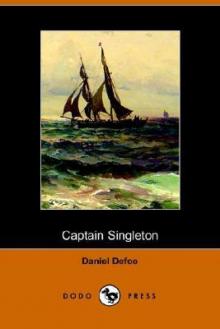 Captain Singleton
Captain Singleton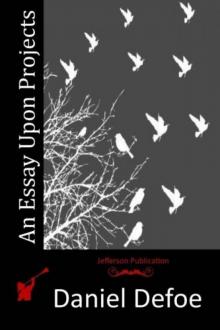 An Essay Upon Projects
An Essay Upon Projects Moll Flanders Moll Flanders Moll Flanders
Moll Flanders Moll Flanders Moll Flanders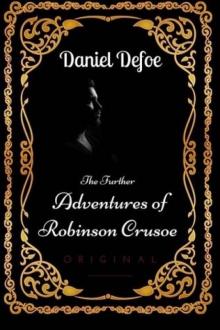 The Further Adventures of Robinson Crusoe
The Further Adventures of Robinson Crusoe Everybody's Business Is Nobody's Business
Everybody's Business Is Nobody's Business Robinson Crusoe
Robinson Crusoe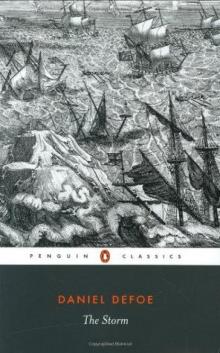 The Storm
The Storm The King of Pirates
The King of Pirates History of the Plague in London
History of the Plague in London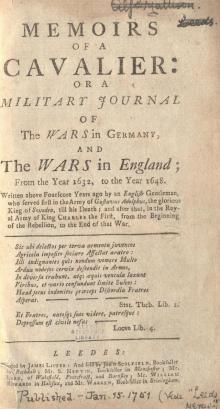 Memoirs of a Cavalier
Memoirs of a Cavalier_preview.jpg) The Life and Most Surprising Adventures of Robinson Crusoe, of York, Mariner (1801)
The Life and Most Surprising Adventures of Robinson Crusoe, of York, Mariner (1801)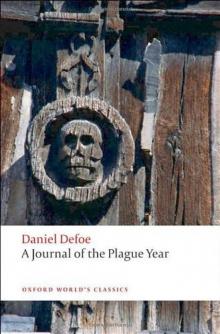 A Journal of the Plague Year
A Journal of the Plague Year_preview.jpg) The Life and Adventures of Robinson Crusoe (1808)
The Life and Adventures of Robinson Crusoe (1808)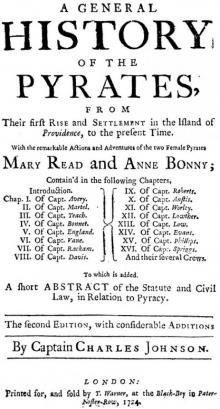 A General History of the Pyrates: / from their first rise and settlement in the island of Providence, to the present time
A General History of the Pyrates: / from their first rise and settlement in the island of Providence, to the present time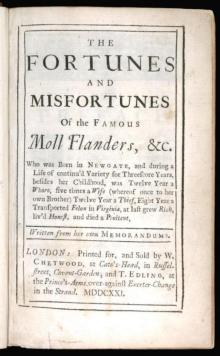 The Fortunes and Misfortunes of the Famous Moll Flanders
The Fortunes and Misfortunes of the Famous Moll Flanders_preview.jpg) The Fortunate Mistress (Parts 1 and 2)
The Fortunate Mistress (Parts 1 and 2) Robinson Crusoe — in Words of One Syllable
Robinson Crusoe — in Words of One Syllable From London to Land's End
From London to Land's End A New Voyage Round the World by a Course Never Sailed Before
A New Voyage Round the World by a Course Never Sailed Before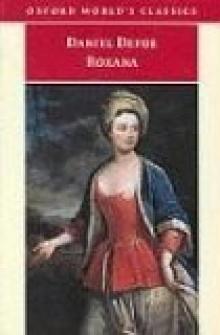 Roxana
Roxana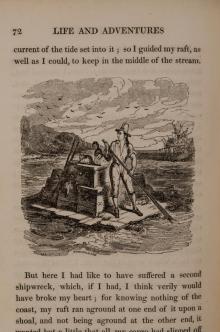 The Life and Adventures of Robinson Crusoe of York, Mariner, Volume 1
The Life and Adventures of Robinson Crusoe of York, Mariner, Volume 1_preview.jpg) Memoirs of Major Alexander Ramkins (1718)
Memoirs of Major Alexander Ramkins (1718)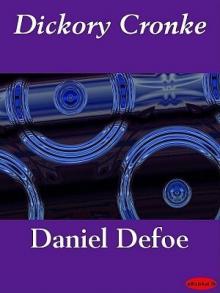 Dickory Cronke
Dickory Cronke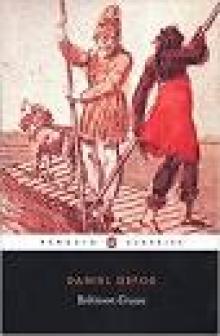 Robinson Crusoe (Penguin ed.)
Robinson Crusoe (Penguin ed.) Moll Flanders
Moll Flanders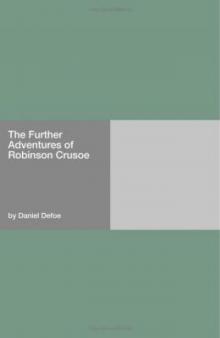 The Further Adventures of Robinson Crusoe rc-2
The Further Adventures of Robinson Crusoe rc-2